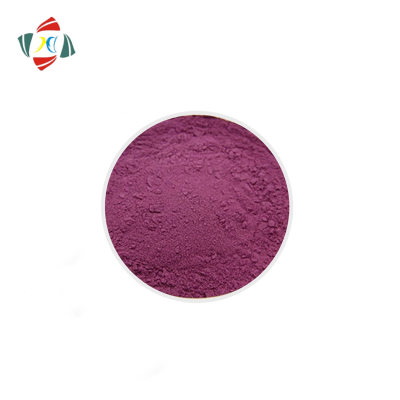-
Categories
-
Pharmaceutical Intermediates
-
Active Pharmaceutical Ingredients
-
Food Additives
- Industrial Coatings
- Agrochemicals
- Dyes and Pigments
- Surfactant
- Flavors and Fragrances
- Chemical Reagents
- Catalyst and Auxiliary
- Natural Products
- Inorganic Chemistry
-
Organic Chemistry
-
Biochemical Engineering
- Analytical Chemistry
- Cosmetic Ingredient
-
Pharmaceutical Intermediates
Promotion
ECHEMI Mall
Wholesale
Weekly Price
Exhibition
News
-
Trade Service
Editor’s note iNature is China’s largest academic official account.
It is jointly created by the doctoral team of Tsinghua University, Harvard University, Chinese Academy of Sciences and other units.
The iNature Talent Official Account is now launched, focusing on talent recruitment, academic progress, scientific research information, interested parties can Long press or scan the QR code below to follow us
.
iNature red blood cells (RBC) are essential for aerobic respiration by transporting oxygen to distant tissues
.
However, it is currently believed that RBC is immunologically inert, and there are few secondary functions (if any) of RBC found
.
On October 20, 2021, the Nilam S Mangalmurti team at the University of Pennsylvania published a research paper titled "DNA binding to TLR9 expressed by red blood cells promotes innate immune activation and anemia" in Science Translational Medicine.
The study showed that red blood cells induce Toll through nucleic acid.
The surface expression of TLR9 (TLR9) serves as a key immunosensor
.
Mammalian red blood cells express TLR9 on their surface and bind to CpG-containing DNA from bacteria, plasmodium and mitochondria
.
During human and mouse sepsis and pneumonia, the mitochondrial DNA bound by RBC increases
.
In vivo, CpG-carrying RBCs accelerate red blood cell phagocytosis and innate immune activation characterized by increased interferon signaling
.
During CpG-induced inflammation and polymicrobial sepsis, the specific loss of red blood cells in TLR9 eliminates red blood cell phagocytosis and reduces local and systemic cytokine production
.
Therefore, the detection and capture of nucleic acids by RBC expressing TLR9 can regulate red blood cell clearance and the production of inflammatory cytokines, proving that RBC functions as an immune sentinel under pathological conditions
.
Consistent with these findings, in patients with viral pneumonia and sepsis secondary to coronavirus disease (COVID-19) in 2019, RBC-bound mitochondrial DNA is elevated and is related to anemia and the severity of the disease
.
These findings reveal the previously undervalued role of red blood cells in inflammation as a key player different from their functions in gas transport
.
Red blood cells (RBC) account for the majority of circulating cells in mammals and are essential for respiration
.
Although the non-gas exchange functions of red blood cells have been described, such as chemokine regulation, complement fixation, and pathogen fixation, the immune function of red blood cells remains a mystery
.
Red blood cells pass through all tissues and come into contact with circulating pathogens and autogenous inflammatory mediators, positioning them as ideal messengers between distant organs
.
Under the basic conditions of homeostasis, red blood cells bind to and remove nucleic acids in the lung; however, the role of RBC nucleic acid binding in the host immune response during inflammation is unclear
.
The evolutionarily conserved nucleic acid-sensing Toll-like receptor (TLR) can recognize nucleic acids from itself and pathogens, and play a central role in inflammation by promoting the secretion of inflammatory cytokines, maturation and proliferation of immune cells
.
Elevated DNA containing cell-free CpG is a sign of infection and sterile damage
.
What these inflammatory pathologies have in common is acute anemia, which is an important cause of the morbidity observed during sepsis and critical illness
.
Multiple studies have shown that intracellular nucleic acid and TLR signaling in monocytes and macrophages play a role in inflammatory anemia and cytopenia; however, whether RBC itself or cell-free DNA contributes to RBC clearance is unclear
.
Red blood cells express intracellular TLR9 and eliminate cell-free (including CpG) mitochondrial DNA (cf-mtDNA) under steady-state conditions
.
These data indicate that TLR9-mediated isolation of cf-mtDNA by RBC represents a protective mechanism that can remove toxic, cell-free nucleic acids from the circulation of healthy hosts
.
However, how RBC-dependent CpG binding promotes the inflammatory response during infection remains unknown
.
Here, the study showed that TLR9 is expressed on the surface of RBC, and during the inflammatory state, the binding of RBC TLR9 to DNA leads to accelerated red blood cell clearance and systemic inflammation, thereby linking RBC nucleic acid binding to innate immune activation and anemia during the inflammatory state
.
Reference message: https://







